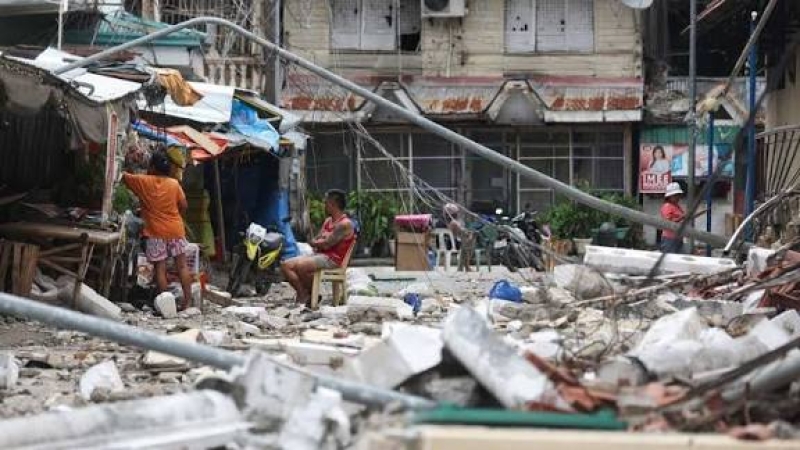- Raise alarm over successive floods and drought in Teesta Basin: IFC |
- UNOPS, Takeda partner to tackle Bangladesh's medical waste crisis |
- Philippine Quake Kills Up to 60 as Rescue Efforts Continue |
- Rohingya Crisis in Myanmar Seen as ‘Test for Humanity’ |
- Prof Yunus leaves New York for Dhaka |
Philippines earthquake kills 69, rescue efforts underway

Rescuers in the central Philippines used heavy equipment and sniffer dogs on Wednesday to search for survivors in collapsed homes and damaged buildings, a day after a powerful earthquake left at least 69 people dead.
Officials warned the toll could rise from Tuesday night’s magnitude 6.9 quake, which struck around 10 p.m., trapping residents in the hardest-hit city of Bogo and nearby rural towns in Cebu province. Rescue efforts were slowed by rain, damaged bridges and blocked roads.
“We’re still in the golden hour of our search and rescue,” said Bernardo Rafaelito Alejandro IV, deputy administrator of the Office of Civil Defense, noting reports of many people pinned under debris.
The quake’s epicenter was traced to an undersea fault at a shallow depth of 5 kilometers, about 19 kilometers northeast of Bogo, a coastal city of 90,000 where nearly half the deaths occurred.
Authorities are assessing whether international assistance will be sought. The U.S., Japan, Australia and the European Union have already expressed condolences. “We stand ready to support the Philippine government’s response,” U.S. Ambassador MaryKay Carlson said on X.
In Bogo, rescuers tried to move heavy machinery to a mountain village hit by a landslide and falling boulders, said city disaster officer Rex Ygot. Several survivors were taken to hospital.
Fatalities were also reported in the nearby towns of Medellin and San Remigio, where a firefighter, three coast guard members and a child were killed by falling walls and debris as they fled a basketball game disrupted by the quake.
The quake, among the strongest in the region in over a decade, struck while many were at home. A brief tsunami alert was issued for Cebu, Leyte and Biliran provinces but lifted after no significant waves were observed. Still, thousands of frightened residents spent the night outdoors despite rain.
The disaster struck as the region was still reeling from a tropical storm that killed at least 27 people last week, cut power in major areas and displaced tens of thousands.
Schools and offices were closed in quake-hit cities and towns as buildings were inspected. More than 600 aftershocks have been recorded since Tuesday night, said Teresito Bacolcol, director of the Philippine Institute of Volcanology and Seismology, warning of landslide risks on soaked mountainsides, reports UNB.
“This was really traumatic for people. They were battered by a storm and then jolted by an earthquake,” he said.
The Philippines, located on the Pacific “Ring of Fire,” frequently faces quakes, volcanic eruptions and about 20 typhoons each year.

